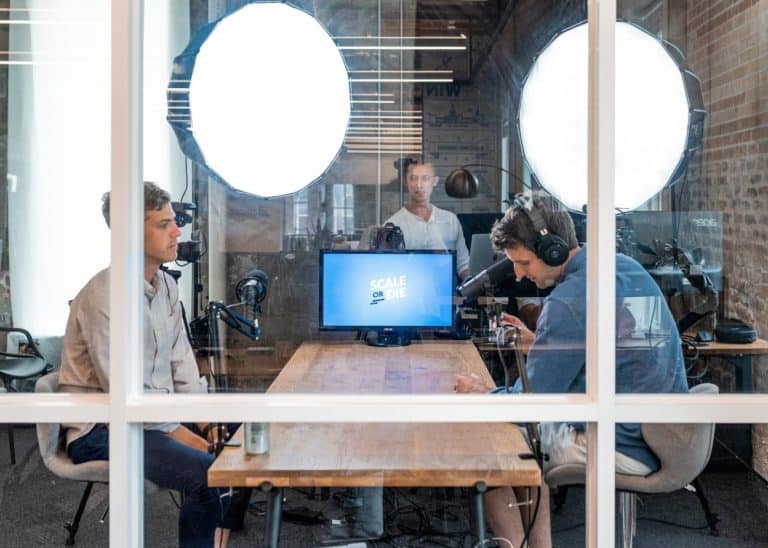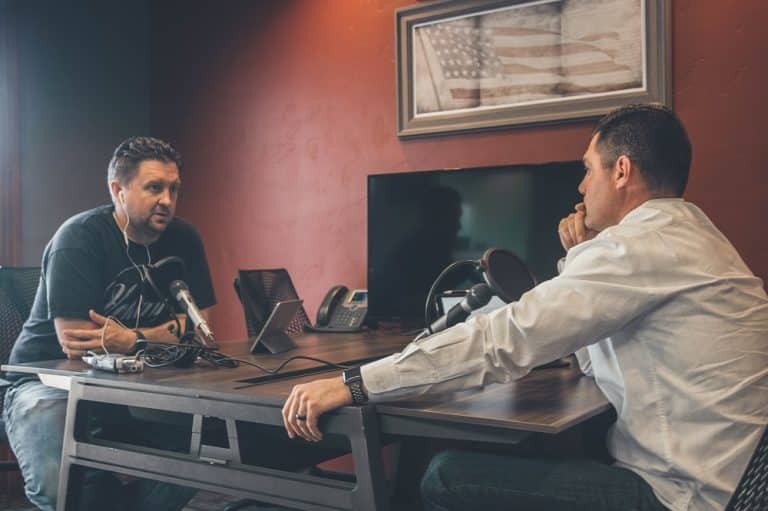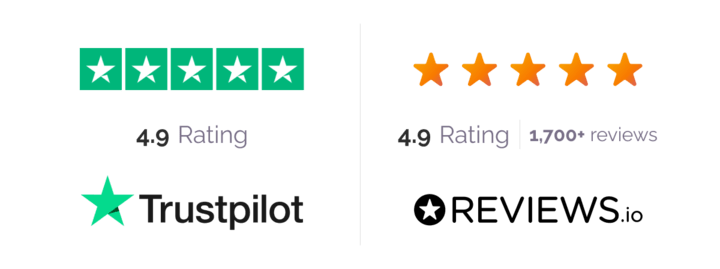Podcasts continue to grow in popularity, and are becoming the favorite medium for many people to access content they care about.
Whether you’re looking to get into podcasting, or are just here for tips on how to create the best sounding podcast, you’ve come to the right place!
🎙️ Start with the Right Equipment
Before you can record and edit a podcast, you need the right equipment. To get started, you’ll need a computer, a microphone, and access to the internet.
A built-in microphone on your computer may not give you the best quality, so it’s normally a good idea to purchase a USB microphone setup.
Make sure you have the right recording software, as well. Record It comes installed on most PCs, while iMovie or GarageBand come on Macs.

Find the Right Location for Recording
Avoid recording in a small space with hard surfaces – this can hurt your sound quality and lead to echoes and distortion. This doesn’t help your sound quality at all. Instead, record in a large, quiet room that has lots of space.
Make sure your background noise is not noticeable (the A/C or heater can be quite loud in a recording). Use material that can absorb or diffuse sound as you tweak and adjust.
Check Your Audio
Your audio input level should be around 10dB. This gives you a clean sound, eliminating distortion or digital clipping.
Check Your Mic Position
The best angle for your microphone is to be up to the side while angled slightly toward your mouth. This eliminates those popping sounds on the letter P, and snake-like S sounds, giving you a more natural tone.
How to Record Your Podcast
Any podcast recording software worth its salt is going to be easy to use. The process of recording should be as simple as pressing Record, Stop, and Save.
Be prepared for your recording by knowing what you’ll say ahead of time. You don’t want to read your podcast, but you do want a good outline of points you’ll be making.
Be ready with how you’ll introduce yourself, as well as how you’ll sign off. Figuring out these two elements beforehand will eliminate awkward pauses and scrambling for words.

Don’t Forget to Equalize Your Audio
If you’re like most new podcasters you might not know what equalization is. Basically, it’s the process of balancing and adjusting your audio’s frequency/range of frequencies.
By using audio processing filters you can weaken or strengthen frequencies to eliminate imperfections and make your podcast episodes sound better.
In his Podcast Audio Lab workshop, veteran sound engineer and podcast producer Marcus dePaula spoke in depth about equalization (EQ), and shared free and paid plugins that podcasters can use to enhance the quality of their shows.
Here are some of his top tips:
- Your editing actually begins while you are recording. Start with the best podcasting equipment you can possibly afford to cut down on editing time.
- At a minimum, you need a pop filter, a boom arm, and the right microphone – his favorite is the Samsung Q2U
- His pet peeve is podcasters recording with Airpods because he says the harsh quality they create in audio will negatively impact how your show sounds in your listener’s ears
- Use both headphones and speakers when equalizing audio
- This way you can determine how your audio will send to both types of listeners: those who listen with headphones, and those who listen in the car on their commute
- It’s a good idea to get your hearing checked because then you can find out what hearing issues you may have that can impact how your edited audio sounds to you
- All of us have different hearing issues that we may not even perceive (especially as we age), and what sounds good to us, might sound horrible to our listeners
- In the event your hearing is too damaged to edit properly, it may be time to invest in a podcast producer or audio editor who can manage this task for you
- EQ is a balancing act because your frequency will be different based on your voice and your audience’s ears
- It may take a significant amount of time to master EQ, and you will need to play with it and figure out what sounds best for your unique voice
- Let others listen to your show while you are working on your EQ to see how it sounds to them
- You may also want to consider using a noise cancelling app which will prevent room and acoustic echoes and could greatly reduce the amount of time you’d spend editing out background noises.
Free EQ Plugins
Here are some free EQ plugins to check out:
- QRange by lkjb
- SAFEEqualiser by Semantic Audio
- TDR Nova by Tokyo Dawn Records
- SplineEQ FREE by Photosounder
- BasiQ by Kuassa
- MERICA by Analog Obsession
Paid EQ Plugins
The top two paid plugins are:
- Neutron 3 Elements by iZotope
- Scheps Omni Channel by Waves
💡 Related Reading: How to Create Smaller Podcast Files That Don’t Skimp on Audio Quality
More Tips for Editing Your Episode Files
It’s a good idea to know what sort of pacing you want in your podcast before you begin the podcast editing process.
Do you want it to be quick and short? Smooth? Knowing what you want will help you with your editing.
Trim your filler words and false starts to make the listening a more enjoyable experience. We all say “um” and “uh” more than we should, so trim these filler words when you can, especially if they come at the beginning of a sentence.
Be sure you don’t cut your breaths in an unnatural way. Paying attention to the breaths will help with this. Whenever you cut a clip, make sure you insert a crossfade that will join adjacent clips.

Create the Podcast
Once your episode is edited to your satisfaction, it’s time to submit your podcast to the most popular directories so people can easily find you.
You can also make it easy for people to subscribe to your show by listing your podcast RSS feed on your website.
Congrats, you’re done!
Now it’s time to work on the marketing aspect of your podcast. Share your podcast through social media, collaborate with other podcasters, and create your own strategies for getting your podcast noticed.
For more actionable tips, check out the video below on how to promote your podcast on social media!




